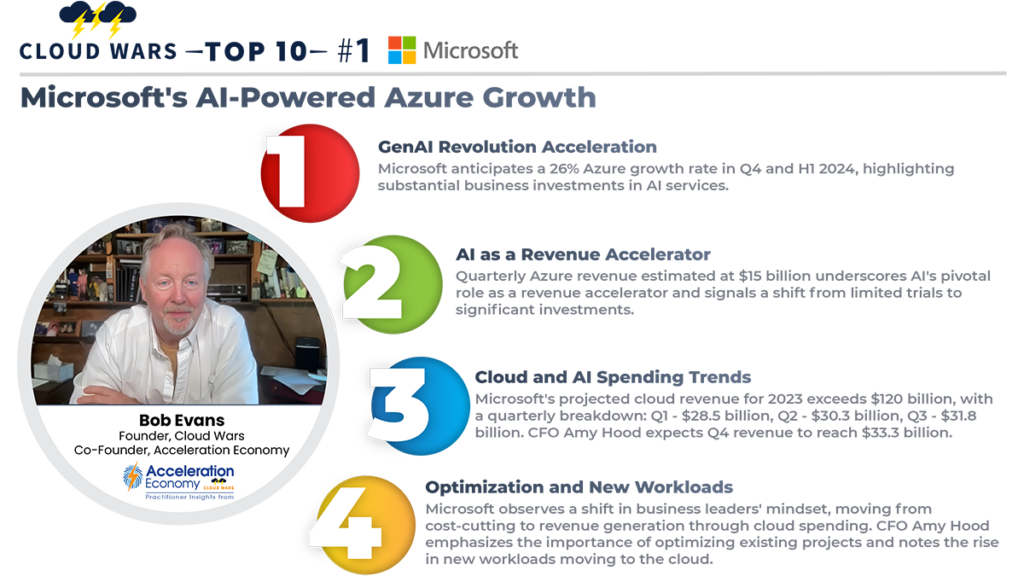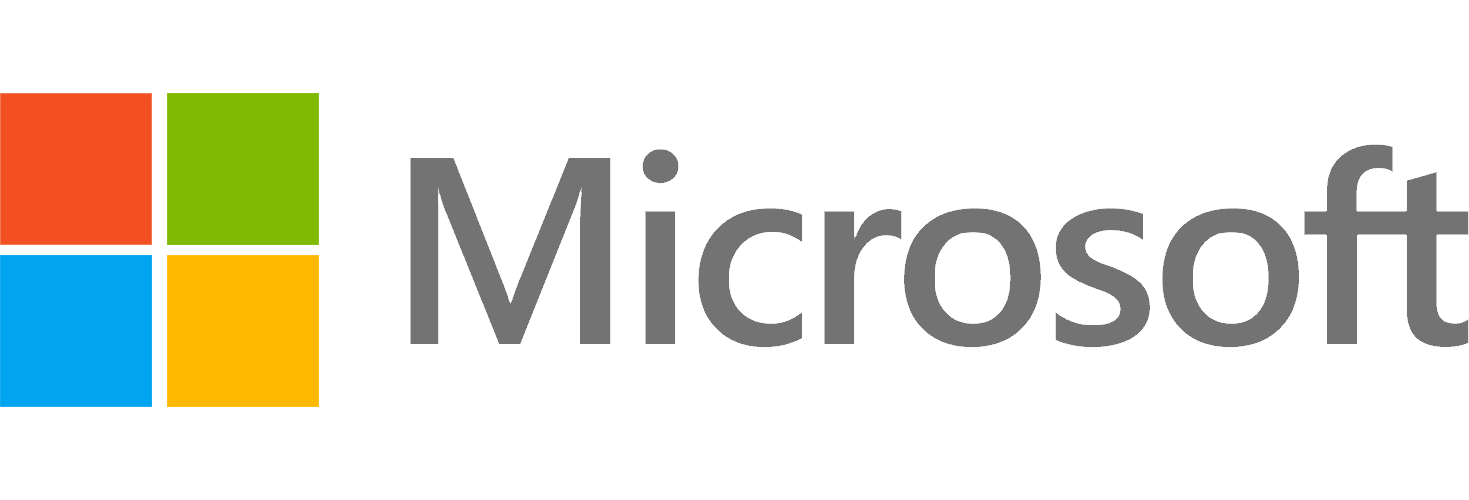
As the generative artificial intelligence (GenAI) revolution accelerates into 2024, Microsoft is predicting AI services will boost its Azure growth rate to at least 26% for the just-completed Q4 and throughout the first half of 2024.
Discover how AI has created a new ecosystem of partnerships with a fresh spirit of customer-centric cocreation and a renewed focus on reimagining what is possible. The Acceleration Economy AI Ecosystem Course is available on demand.
This unfolding evidence about AI’s emerging role as a revenue accelerator for Microsoft is striking for a few reasons:
- it shows how rapidly businesses are investing significantly in GenAI, and not merely talking about it;
- it proves that those investments have moved well beyond a few limited-scale trials because Microsoft’s quarterly Azure revenue is probably about $15 billion — Microsoft does not release specific Azure revenue figures — so it takes a lot of new spending to push growth rates up by a few percentage points; and
- it is yet another reminder to business leaders working on AI strategies that the worst of all options is to do nothing, sit still, stand pat, or wait and see. Or, put less politely, choose to do nothing in the full knowledge that you’re pulling the plug on your ability to remain viable.
As we embark on our journeys into the new year and get back into the work routine, I wanted to refresh our memories on what the current climate for cloud and AI spending looks like. And who better to start with than mighty Microsoft, which is very likely to finish calendar 2023 with cloud revenue of more than $120 billion. Microsoft will report calendar-Q4 numbers at the end of this month, but here are the Microsoft Cloud revenue figures for first 3 quarters of calendar 2023:
- Q1, $28.5 billion
- Q2, $30.3 billion
- Q3, $31.8 billion
Those three numbers add up to $90.6 billion, and I’m estimating that cloud revenue for the quarter ended Dec. 31 (Microsoft’s FY24 Q2) will rise 23% to $33.3 billion, resulting in a grand total for the calendar year of $123.9 billion.
Those official numbers and my speculation aside, here’s what Microsoft CFO Amy Hood had to say about her expectations for the Dec. 31 quarter when she offered guidance during Microsoft’s fiscal-Q1 earnings call in late October: “In Azure, we expect revenue growth to be 26% to 27% in constant currency with increasing contribution from AI [emphasis added]. Growth continues to be driven by Azure consumption business and we expect the trends from Q1 to continue into Q2.”
So Hood is saying that as Azure’s AI-oriented revenue continues to surge, it is allowing Azure’s growth rate to remain at 26% or 27% even as the overall Azure business becomes much, much larger — as noted above, I think Azure revenue for the quarter ended Dec. 31 could be $15 billion or possibly higher, making it almost 50% of total Microsoft Cloud revenue.
On top of that, Hood also said she expects that powerful AI-fueled growth dynamic will continue into the first half of calendar 2024 — what she calls “H2” because Microsoft’s fiscal year ends June 30 — with Azure growth rates likely to remain at that remarkable level of 26% or 27% in spite of much larger bases.
“For H2, assuming the optimization and new workload trends continue and with the growing contribution from AI, we expect Azure revenue growth in constant currency to remain roughly stable compared to Q2,” Hood said
Final Thought
Hood’s point about “assuming the optimization and new-workload trends continue” underscores another vital shift in the mindset of business leaders about IT spending in today’s turbulent markets: “Optimization” refers to companies cutting back on new cloud spending to ensure existing projects are fully optimized, and Hood’s broader point was that Microsoft is seeing those efforts wind down and/or disappear.
At the same time, Hood also pointed to the rise in moving new workloads to the cloud, which means Microsoft is seeing reinvigorated spending as business leaders begin to view cloud spending as a way to boost revenue and not just cut costs.









